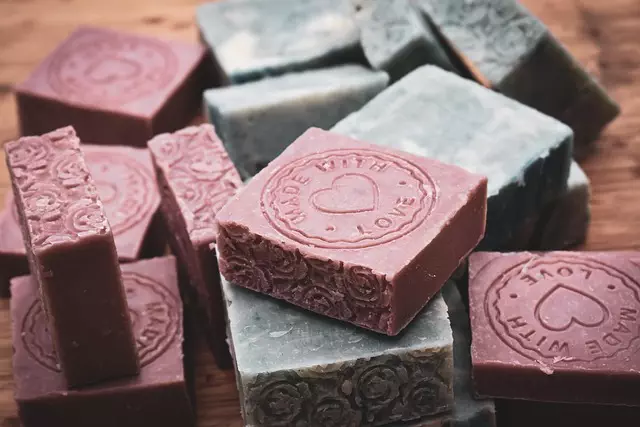Personalized RF Skin Resurfacing: Unlocking Radiant Complexion
RF Skin Resurfacing offers a non-invasive skincare solution using radiofrequency energy to stimulate…….

RF Skin Resurfacing offers a non-invasive skincare solution using radiofrequency energy to stimulate collagen production and remodel the dermal layer. Customized plans address specific skin concerns like fine lines, wrinkles, acne scars, and uneven texture, with various procedures such as microneedling RF and fractional RF. A thorough consultation assesses skin type and damage severity for optimal results. Post-treatment care involves sun protection, gentle cleansing, hydration, and avoiding harsh products to ensure successful recovery. Visual evidence and FAQs address concerns about safety, downtime, and effectiveness, making it a popular choice for anti-aging and skin rejuvenation across diverse demographics.
“Unveil your skin’s radiant potential with Customized Skin Resurfacing Plans, a revolutionary approach to achieving youthful, smooth complexion. This comprehensive guide delves into the world of RF Skin Resurfacing, offering a detailed overview for those seeking a tailored treatment. From understanding the technology to exploring its myriad benefits, we break down the process step-by-step. Discover how personalized plans cater to unique skin needs, ensuring optimal results. Uncover real-life transformations and address common concerns, as we empower you with knowledge on this game-changing RF Skin Resurfacing.”
Understanding RF Skin Resurfacing: A Comprehensive Overview

Radiofrequency (RF) skin resurfacing is a non-invasive cosmetic procedure that utilizes concentrated radiowave energy to stimulate collagen production and improve skin texture, tone, and elasticity. Unlike traditional ablative methods that involve scraping or burning away damaged skin, RF treatments gently remodel the dermal layer, leading to a smoother, more youthful appearance.
During an RF skin resurfacing session, fine needle-like probes are used to deliver radiofrequency energy into the deeper layers of the skin. This controlled heat prompts collagen fibers to contract and tighten, while also stimulating new collagen growth. The result is reduced fine lines, wrinkles, and acne scars, as well as improved overall skin texture and tone. RF skin resurfacing is a versatile procedure suitable for various skin types and concerns, making it an attractive option for those seeking effective yet minimally invasive anti-aging solutions.
The Benefits of Customized Skin Resurfacing Plans

Customized skin resurfacing plans offer a multitude of benefits, tailored to meet individual skin concerns and goals. Unlike one-size-fits-all approaches, these personalized treatments address specific needs, ensuring optimal results. By combining advanced technologies like Radio Frequency (RF) Skin Resurfacing with precise protocols, dermatologists can effectively combat signs of aging, improve texture, reduce acne scars, and enhance overall skin tone.
RF Skin Resurfacing, for instance, uses targeted heat energy to stimulate collagen production and promote skin rejuvenation. When integrated into a customized plan, this non-invasive procedure becomes even more powerful. Such plans consider factors like skin type, severity of damage, and desired outcomes, ensuring that each treatment step is aligned with achieving healthy, glowing skin.
Types of RF Skin Resurfacing Treatments

Radiofrequency (RF) skin resurfacing is a non-invasive treatment that utilizes targeted heat energy to stimulate collagen production and improve skin texture. There are several types of RF treatments available, each with unique features catering to different skin concerns. One popular method is Microneedling RF, which combines microneedling—creating tiny channels in the skin—with radiofrequency energy to enhance collagen stimulation. This treatment is effective for fine lines, wrinkles, and improving overall skin tone.
Another form is Fractional RF, which delivers targeted radiofrequency energy to specific layers of the dermis. It’s ideal for addressing deeper facial wrinkles, scars, and uneven skin texture. The non-invasive nature of these treatments makes them appealing, as they offer minimal downtime compared to surgical alternatives, while still providing visible improvements in skin appearance and health.
Evaluating Your Skin: Assessing Eligibility and Needs

Evaluating your skin’s condition is a crucial step in determining the most effective customized skin resurfacing plan, such as Radio Frequency (RF) Skin Resurfacing. During an initial consultation, dermatologists or skincare experts will assess your skin to understand its unique needs and characteristics. This process involves examining various factors like skin type, tone, texture, and any specific concerns or issues you wish to address. By analyzing these elements, professionals can identify suitable treatment options tailored to your requirements.
In terms of RF Skin Resurfacing, eligibility is assessed based on skin health and structure. This non-invasive procedure uses targeted radiofrequency energy to stimulate collagen production and improve skin texture. Candidates are typically those with moderate to severe fine lines, wrinkles, or uneven skin tone, who seek a gentle yet impactful rejuvenating treatment. The assessment ensures that the chosen plan aligns with your expectations and provides optimal results, making it an essential step in the skincare journey.
Designing Your Personalized Treatment Plan

When designing a personalized skin resurfacing plan, it’s crucial to start with a thorough consultation. During this session, a dermatologist will assess your unique skin concerns, including wrinkles, scars, or age spots. They’ll also consider your skin type and tone, along with your lifestyle and goals. This comprehensive evaluation enables them to tailor an RF Skin Resurfacing treatment plan that aligns perfectly with your needs.
The consultant may recommend specific procedures like microneedling, radiofrequency (RF) skin resurfacing, or laser treatments. Each has its advantages: RF Skin Resurfacing, for instance, offers precise collagen stimulation and is suitable for various skin types. The dermatologist will explain the benefits, potential side effects, and expected results of each procedure, empowering you to make an informed decision that paves the way for successful skin rejuvenation.
Step-by-Step Guide to RF Skin Resurfacing Procedure

The RF (Radiofrequency) Skin Resurfacing procedure is a non-invasive treatment that utilizes targeted heat to stimulate collagen production and enhance skin texture. Here’s a step-by-step guide to this advanced skincare approach.
1. Consultation and Preparation: The process begins with an in-depth consultation where a dermatologist assesses your skin, discusses your goals, and determines the ideal RF Skin Resurfacing plan. Before the procedure, you may be advised to avoid certain medications and topical products to ensure optimal results and minimize potential side effects.
2. Cleansing and Anesthesia: The treatment area is thoroughly cleansed to remove any oil or makeup. A topical anesthetic may be applied to numb the skin, ensuring a comfortable experience. This step is crucial for minimizing discomfort during the procedure.
3. Application of RF Device: A specialized RF device, often equipped with different settings and probes, is gently pressed against the skin. The device emits precise radiofrequency energy, targeting specific depths to stimulate collagen renewal. This process can feel like a warm, gentle vibration.
4. Heat Application and Collagen Stimulation: As the RF energy is delivered, the heat generated promotes collagen contraction and stimulation of new collagen fiber production. This instant heating and cooling effect improves skin elasticity and reduces fine lines and wrinkles.
5. Post-Treatment Care: After the procedure, any remaining anesthetic wears off, and you may experience temporary redness or mild swelling. Skincare professionals provide aftercare instructions, including the use of calming and hydrating products to soothe the treated area.
Post-Treatment Care and Recovery Tips

After your RF Skin Resurfacing treatment, proper post-care is essential for optimal results and a smooth recovery process. It’s recommended to avoid sun exposure as much as possible during this period; always use broad-spectrum sunscreen with at least SPF 30 when outdoors. Keep the treated area clean by gently washing it with a mild cleanser and applying a soothing moisturizer as directed by your dermatologist. Avoid using harsh products, scrubs, or retinol creams for a few days to prevent irritation.
During recovery, you may experience temporary redness, swelling, and sensitivity in the skin. It’s crucial to be gentle with the treated area, avoiding strenuous activities and hot water when cleansing. You can expect the skin to start peeling after a few days, which is a normal part of the healing process. Stay hydrated by drinking plenty of water, and consider using cold compresses to reduce any discomfort or swelling. Remember, following these post-treatment tips will help ensure your skin not only heals but also encourages future rejuvenation.
Real-Life Results: Before and After Stories

In the realm of skincare, seeing is believing. That’s why sharing real-life results of RF Skin Resurfacing treatments is a game-changer. Before and after stories offer tangible proof of the transformative power of this innovative procedure. By combining radiofrequency energy with precise skin targeting, practitioners can achieve remarkable enhancements, from reducing fine lines and wrinkles to improving skin texture and tone.
These stories showcase the diverse range of outcomes possible, catering to various skin concerns. Whether it’s a client battling acne scars, seeking smoother skin, or aiming to reverse signs of aging, RF Skin Resurfacing has proven effective across different demographics. The before-and-after pictures tell a compelling tale, emphasizing not just the visible changes but also the boosted confidence and renewed sense of well-being that often accompany these remarkable results.
FAQs: Answering Common Concerns About RF Skin Resurfacing

FAQs: Answering Common Concerns About RF Skin Resurfacing
When considering RF (Radio Frequency) skin resurfacing, it’s natural to have questions. This advanced skincare treatment has gained popularity for its ability to stimulate collagen production and improve skin texture. One of the most frequent queries is, “Is RF skin resurfacing safe?” The answer is yes; when performed by a qualified professional using approved equipment, it’s generally considered safe and effective. Modern RF devices are designed with safety in mind, minimizing discomfort and reducing risks.
Another common concern revolves around downtime. Many clients worry about the recovery period after treatment. Good news—RF skin resurfacing typically involves minimal downtime. Most people can resume their regular activities within a day or two, though minor redness or swelling might occur. It’s crucial to follow post-treatment instructions from your dermatologist to ensure optimal results and expedite healing.







